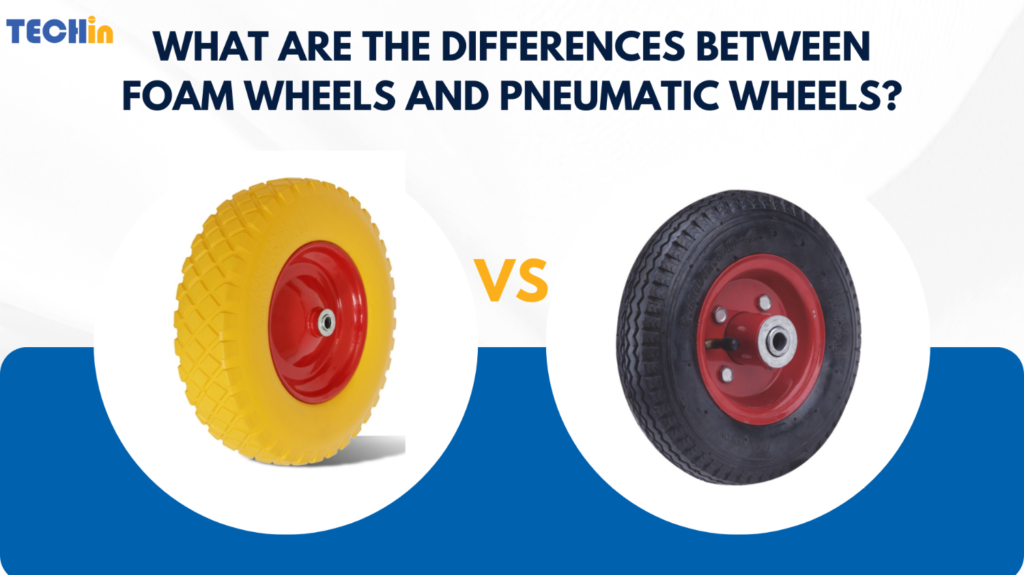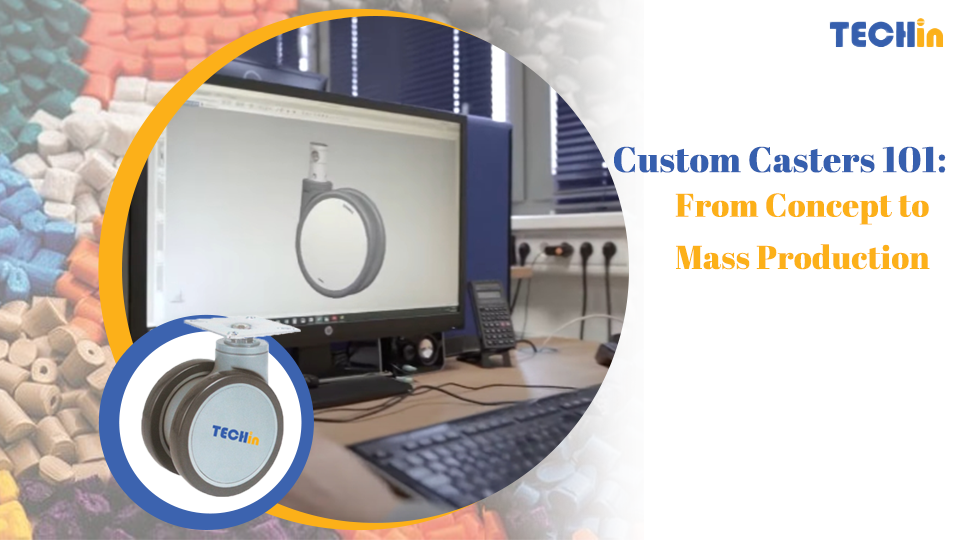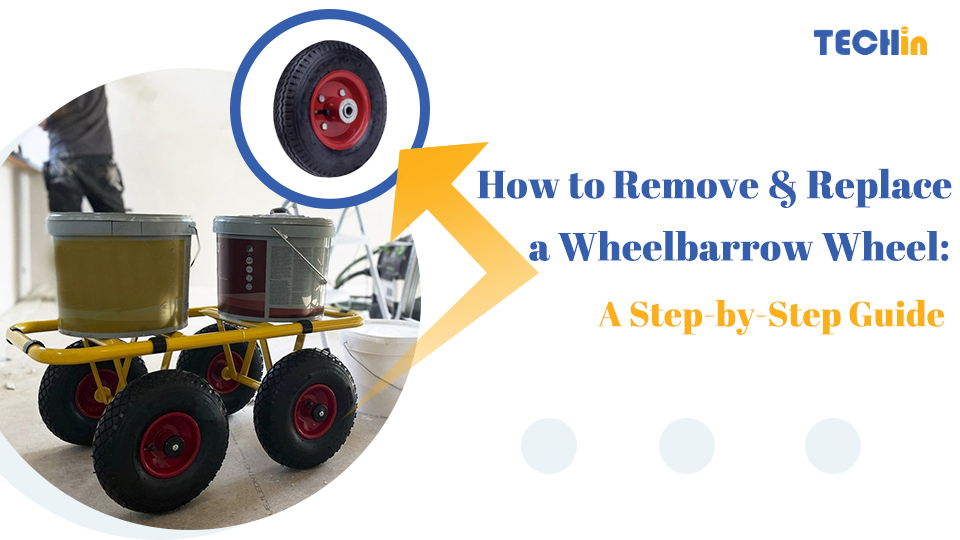Choosing the right wheel can be a tough decision, especially when you’re trying to decide between foam wheels and pneumatic wheels. Both types have their pros and cons, so it’s important to know the difference before you buy. Whether you’re looking for wheels for a stroller, wheelchair, or cart, knowing what sets these wheels apart will help you make the right choice.
Foam Wheels vs. Pneumatic Wheels: A Quick Overview
Foam wheels and pneumatic wheels are different in how they’re made, how they perform, and how you have to take care of them. Foam wheels are made out of solid or semi-solid foam materials, which means they can’t go flat and you don’t have to do anything to take care of them, but they may not absorb shock as well as pneumatic wheels. Pneumatic wheels are filled with air, so they give you a smoother ride, especially on rough terrain, but you have to take care of them to keep them from going flat and to keep the right amount of air in them.
What Exactly Are Foam Wheels and How Are They Made?
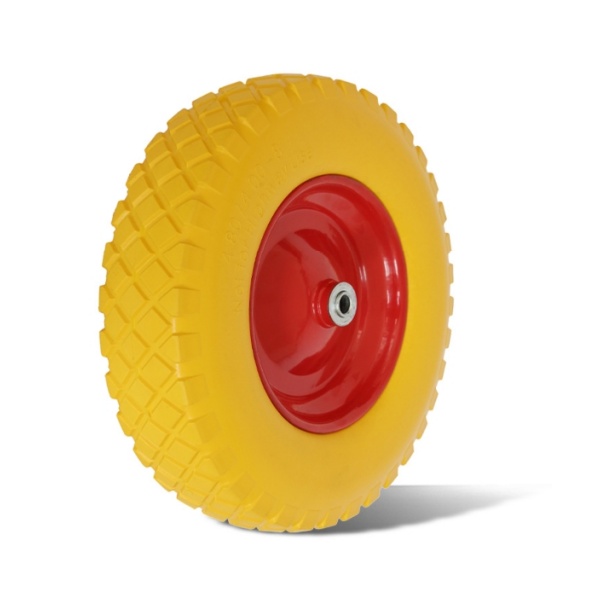
Foam wheels are designed to be a durable and maintenance-free solution for various applications. These wheels are typically constructed from closed-cell foam, a material known for its density and resilience. Closed-cell foam is made up of tiny cells that are completely sealed, preventing air and moisture from entering. This construction makes foam wheels resistant to water damage and immune to punctures, which are common issues with pneumatic wheels.
The manufacturing process for foam wheels involves molding the foam material into the desired wheel shape. In some cases, the foam is molded around a solid core, providing additional strength and stability. Foam wheels can vary in hardness and density depending on the specific application, ranging from soft, spongy foam for lightweight uses to denser, harder foam for heavier loads. The result is a wheel that is lightweight, durable, and virtually maintenance-free.
What Exactly Are Pneumatic Wheels and How Are They Made?

Pneumatic wheels are constructed similarly to traditional car tires, consisting of an inner tube filled with air and encased in a durable rubber tread. The key characteristic of pneumatic wheels is their ability to provide a cushioned ride by absorbing shocks and vibrations. This makes them particularly well-suited for applications that involve rough or uneven terrain, where a smooth ride is essential.
The manufacturing process for pneumatic wheels begins with the production of the rubber tread, which is molded into the shape of the tire. The inner tube, typically made from synthetic rubber, is then inserted into the tire and inflated to the desired pressure. The air pressure inside the tube provides the wheel with its cushioning effect. Some pneumatic wheels also feature a tread pattern designed to enhance traction on different surfaces, further improving their performance in outdoor settings.
What Are the Key Differences Between Foam Wheels and Pneumatic Wheels?
The differences between foam wheels and pneumatic wheels extend beyond their construction. Here are the key areas where these two types of wheels diverge:
- Weight: Foam wheels are generally lighter than pneumatic wheels because they are made from solid or semi-solid foam, without the added weight of air and rubber components. This lighter weight can make foam wheels easier to handle and maneuver, particularly in applications where minimizing weight is important, such as in strollers or lightweight carts.
- Durability: One of the main advantages of foam wheels is their durability. Because they are solid and cannot be punctured, foam wheels are well-suited for environments where sharp objects or debris could damage pneumatic wheels. Foam wheels can withstand rough handling and continue to perform reliably over time, making them ideal for heavy-duty applications where downtime due to flat tires would be costly.
- Cost: While foam wheels often have a higher initial cost compared to pneumatic wheels, they are more cost-effective in the long run. This is because foam wheels do not require regular maintenance, such as air pressure checks or repairs for punctures. Pneumatic wheels, while cheaper upfront, may incur additional costs over time due to the need for repairs and replacements.
- Maintenance: Foam wheels are virtually maintenance-free, requiring no air checks or puncture repairs. This makes them an attractive option for users who want a hassle-free experience. Pneumatic wheels, however, require regular maintenance to ensure they remain properly inflated and free from punctures. This maintenance is crucial to maintaining the performance and longevity of pneumatic wheels.
- Performance: In terms of performance, pneumatic wheels excel in providing a smooth, cushioned ride. The air-filled design allows these wheels to absorb shocks and vibrations, making them ideal for rough terrains and heavy-duty applications. Foam wheels, while durable and low-maintenance, do not offer the same level of cushioning and may result in a bumpier ride, especially on uneven surfaces.
| Feature | Foam Wheels | Pneumatic Wheels |
|---|---|---|
| Weight | Lighter and easier to handle | Heavier due to air and rubber components |
| Durability | Puncture-proof and highly durable | Can be punctured; requires more careful handling |
| Cost | Higher initial cost but lower long-term cost | Lower initial cost but higher maintenance costs |
| Maintenance | Virtually maintenance-free | Requires regular air checks and puncture repairs |
| Performance | Less cushioning, may be bumpier on uneven surfaces | Superior shock absorption, ideal for rough terrain |
Which Type of Wheel Offers Better Shock Absorption: Foam or Pneumatic?
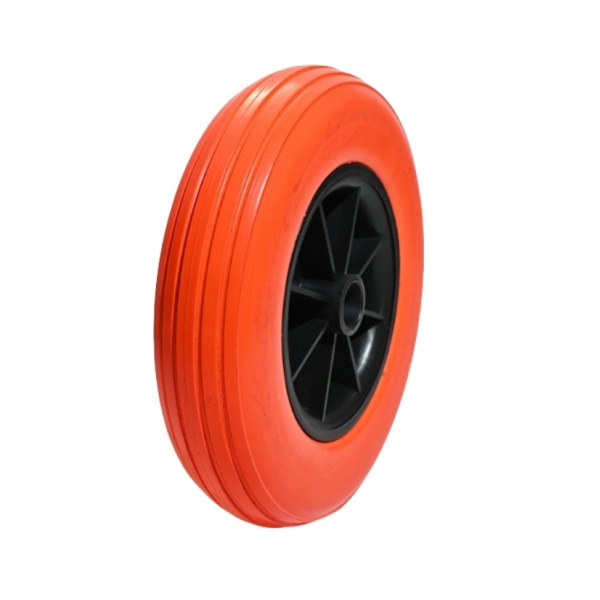
When it comes to shock absorption, pneumatic wheels are the superior choice. The air inside pneumatic wheels acts as a natural shock absorber, compressing under pressure to smooth out bumps and vibrations. This feature is particularly important in applications where user comfort is a priority, such as in wheelchairs, strollers, or outdoor carts used on rough terrain.
Foam wheels, while more durable, do not offer the same level of shock absorption. The solid or semi-solid construction of foam wheels means that they do not compress in the same way as pneumatic wheels, leading to a firmer, less cushioned ride. This can be a disadvantage in situations where a smooth ride is essential, but it may not be a concern in applications where durability and maintenance-free operation are more important.
How Do Foam Wheels Perform in Different Weather Conditions Compared to Pneumatic Wheels?

Foam wheels perform consistently well in a wide range of weather conditions because they are unaffected by temperature changes, humidity, or moisture. Since they are made from solid materials, foam wheels do not experience the same issues as pneumatic wheels, such as air pressure fluctuations caused by temperature changes. This makes foam wheels a reliable choice for environments where weather conditions can vary, and where consistent performance is needed.
Pneumatic wheels, however, can be affected by weather conditions. Cold temperatures can cause the air inside the wheel to contract, leading to reduced air pressure and a less comfortable ride. Conversely, hot temperatures can cause the air to expand, increasing the risk of a blowout. Additionally, pneumatic wheels may struggle in wet conditions if the tread is worn, leading to reduced traction and potential safety concerns.
Are Foam Wheels or Pneumatic Wheels More Cost-Effective Over Time?
Over time, foam wheels tend to be more cost-effective due to their durability and lack of maintenance requirements. While the initial purchase price of foam wheels may be higher than that of pneumatic wheels, the long-term savings on maintenance and replacement costs can make foam wheels the more economical choice. For instance, users do not need to worry about the cost of repairing punctures or replacing inner tubes, which are common expenses with pneumatic wheels.
Pneumatic wheels, while less expensive upfront, can become more costly over time due to the need for regular maintenance, repairs, and eventual replacements. For users who require a smooth, cushioned ride and are willing to invest in regular upkeep, the higher long-term costs of pneumatic wheels may be justified. However, for those who prioritize durability and low maintenance, foam wheels are the more cost-effective option.
What Are the Maintenance Requirements for Foam Wheels Versus Pneumatic Wheels?
Foam wheels require minimal maintenance, making them an ideal choice for users who want a low-maintenance solution. Since foam wheels are solid and cannot be punctured, they do not need to be checked for air pressure, nor do they require repairs for flats. This makes them a reliable option for environments where regular maintenance would be challenging or where downtime due to flat tires is not an option.
Pneumatic wheels, on the other hand, require regular maintenance to ensure optimal performance. This includes checking air pressure regularly to prevent under-inflation or over-inflation, both of which can affect the ride quality and durability of the wheels. In addition, pneumatic wheels may need repairs for punctures, which can be time-consuming and costly. Users should also be prepared to replace the inner tubes periodically as they wear out over time.
Which Type of Wheel is More Eco-Friendly: Foam or Pneumatic?
When considering the environmental impact of foam wheels versus pneumatic wheels, foam wheels generally come out ahead. The production process for foam wheels is often less resource-intensive, and their long lifespan means they do not need to be replaced as frequently as pneumatic wheels. This reduces the amount of waste generated over time, making foam wheels a more sustainable choice.
Pneumatic wheels, while still widely used, tend to have a higher environmental impact due to the need for frequent replacements and repairs. The rubber used in pneumatic wheels, along with the inner tubes, contributes to environmental waste when these components are discarded. Additionally, the energy and resources required to manufacture and dispose of pneumatic wheels add to their overall environmental footprint. However, some pneumatic wheels are now made with recyclable materials, which can help mitigate their environmental impact.
In Which Applications Are Foam Wheels Preferred Over Pneumatic Wheels?
Foam wheels are preferred in applications where durability, low maintenance, and puncture resistance are critical. These include:
- Indoor Use: Foam wheels are ideal for indoor environments where punctures are less likely, and the smoothness of the ride is less of a concern. This makes them a popular choice for indoor carts, strollers used on smooth surfaces, and mobility devices like wheelchairs.
- Warehouses and Manufacturing Plants: In environments where sharp objects or debris are common, foam wheels offer a reliable solution that eliminates the risk of flats. Their durability and maintenance-free design make them well-suited for use in industrial settings where downtime due to wheel issues can be costly.
- Light-Duty Outdoor Applications: Foam wheels are also suitable for light-duty outdoor use, such as in small garden carts or pushcarts used on relatively flat terrain. Their resistance to weather conditions and low maintenance requirements make them a convenient option for users who need a reliable, no-fuss wheel.
| Application | Why Foam Wheels Are Preferred |
|---|---|
| Indoor Use | Puncture resistance and low maintenance make them ideal for smooth surfaces indoors. |
| Warehouses & Manufacturing | Durable against debris and sharp objects, reducing downtime in industrial settings. |
| Light-Duty Outdoor Use | Resistant to weather changes, suitable for flat terrains in light outdoor tasks. |
In Which Applications Are Pneumatic Wheels Preferred Over Foam Wheels?
Pneumatic wheels excel in applications where a smooth, cushioned ride is essential, and where the terrain is uneven or rough. These include:
- Outdoor Use on Rough Terrain: Pneumatic wheels are the preferred choice for outdoor applications that involve rough or uneven terrain, such as in construction, landscaping, or heavy-duty transport. Their superior shock absorption and traction make them ideal for these challenging environments.
- Mobility Devices: For users of mobility devices like wheelchairs or scooters, pneumatic wheels offer a smoother, more comfortable ride. This can be especially important for users who spend extended periods on their mobility devices and need to minimize the impact of bumps and vibrations.
- Recreational Equipment: Pneumatic wheels are also commonly used in recreational equipment such as bicycles, scooters, and outdoor sports gear. The cushioning effect of pneumatic wheels enhances comfort and control, making them the go-to choice for activities that require a smooth ride.
| Application | Why Pneumatic Wheels Are Preferred |
|---|---|
| Outdoor Use on Rough Terrain | Superior shock absorption and traction make them ideal for navigating rough, uneven surfaces. |
| Mobility Devices | Provide a smoother, more comfortable ride, essential for prolonged use in wheelchairs or scooters. |
| Recreational Equipment | Enhance comfort and control in outdoor sports gear and bicycles. |
How Do Foam and Pneumatic Wheels Affect the User Experience in Mobility Devices?
The choice between foam and pneumatic wheels can significantly impact the user experience in mobility devices. Foam wheels offer a reliable, maintenance-free option that eliminates the risk of getting stranded due to a flat tire. This can provide peace of mind for users who need their mobility devices to be dependable at all times.
However, pneumatic wheels offer a level of comfort that foam wheels cannot match. The air-filled design of pneumatic wheels provides superior shock absorption, which can reduce the strain on the user’s body when navigating rough or uneven surfaces. For users who prioritize comfort and are willing to invest in regular maintenance, pneumatic wheels may be the better choice for their mobility devices.
Can Foam Wheels Replace Pneumatic Wheels in All Applications?
While foam wheels offer many advantages, they cannot fully replace pneumatic wheels in all applications. The main limitation of foam wheels is their lack of shock absorption compared to pneumatic wheels. In environments where a smooth ride is critical, such as on rough outdoor terrain, pneumatic wheels are still the preferred choice.
However, foam wheels can serve as an excellent replacement for pneumatic wheels in applications where durability, low maintenance, and puncture resistance are more important than ride comfort. This includes indoor environments, light-duty outdoor use, and industrial settings where the risk of punctures is high.
Summary
In summary, foam wheels and pneumatic wheels each have their own pros and cons. Foam wheels are great if you need something that’s durable, low maintenance, and won’t go flat, while pneumatic wheels are better if you need something that absorbs shock and gives you a smoother ride, especially if you’re going to be on rough terrain or outside. By thinking about what you need the wheels for and where you’re going to use them, you can pick the right kind of wheel for you.
Make the Right Choice for Your Needs
Choosing between foam wheels and pneumatic wheels depends on what you need and what you want. If you want something that’s durable and you don’t have to do anything to, foam wheels are probably your best bet. If you want something that gives you a smooth ride, pneumatic wheels are probably the way to go. Think about what you need and don’t be afraid to ask a wheel expert for help. Check out our selection of high-quality foam and pneumatic wheels today to find the perfect fit for you!

